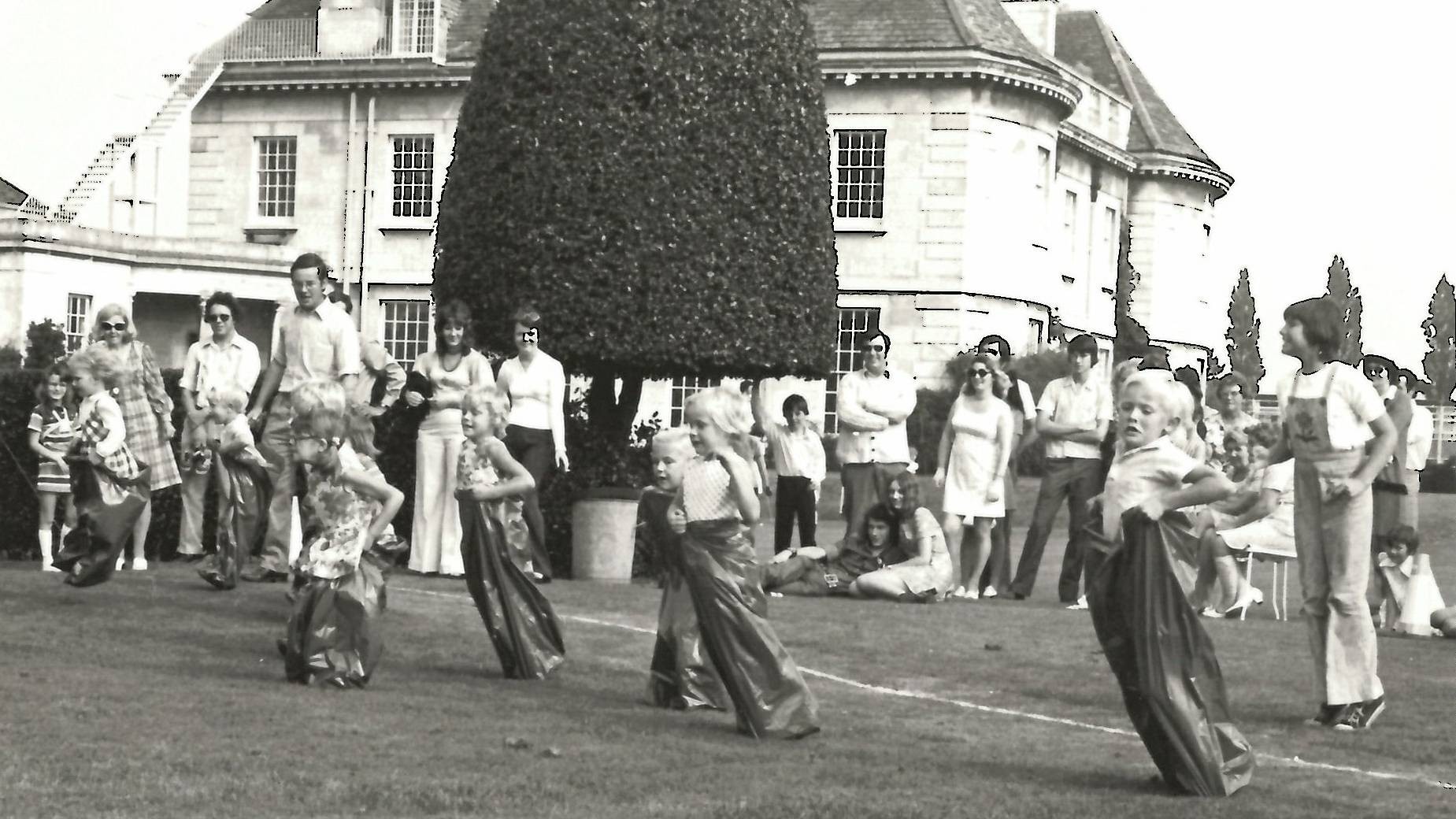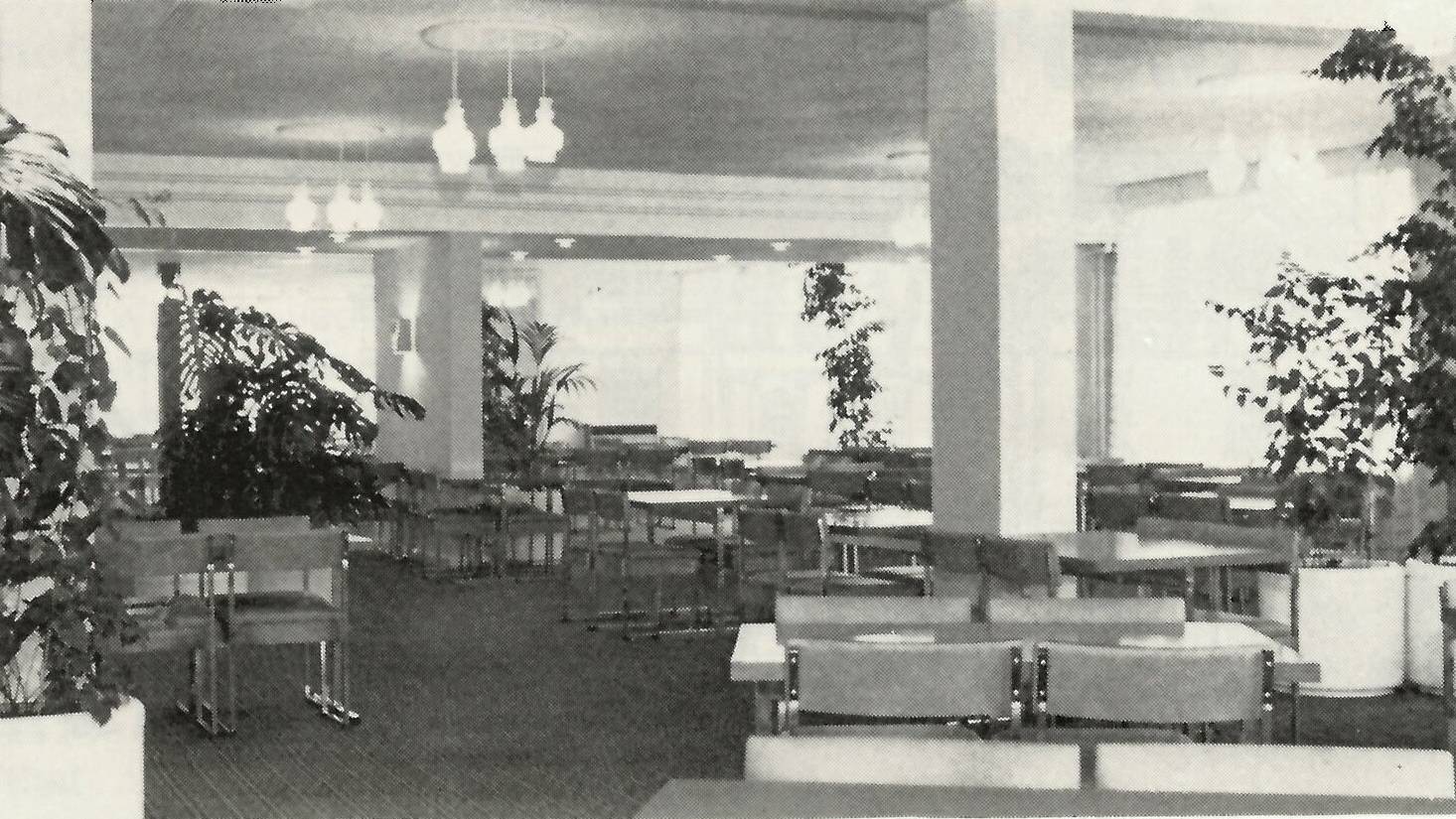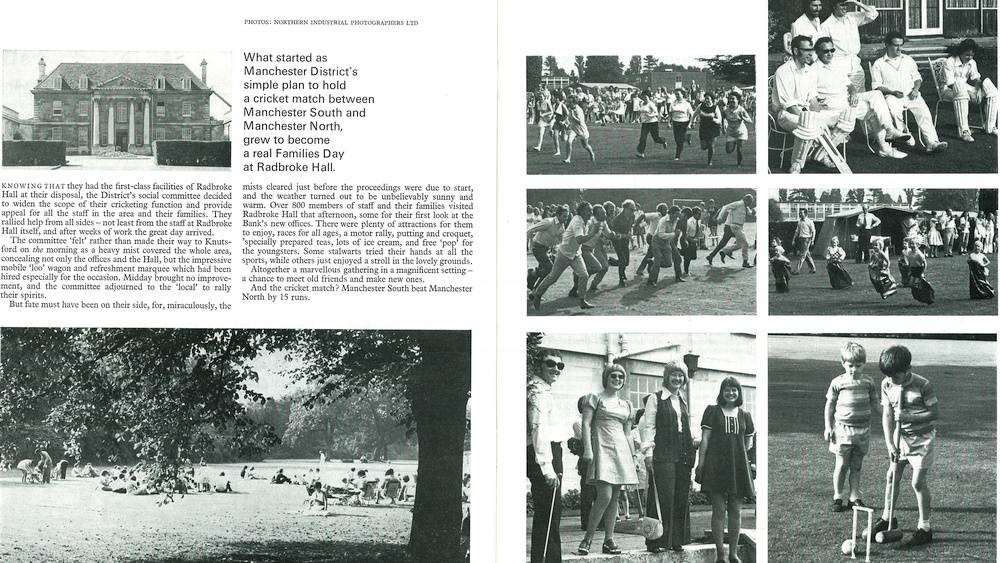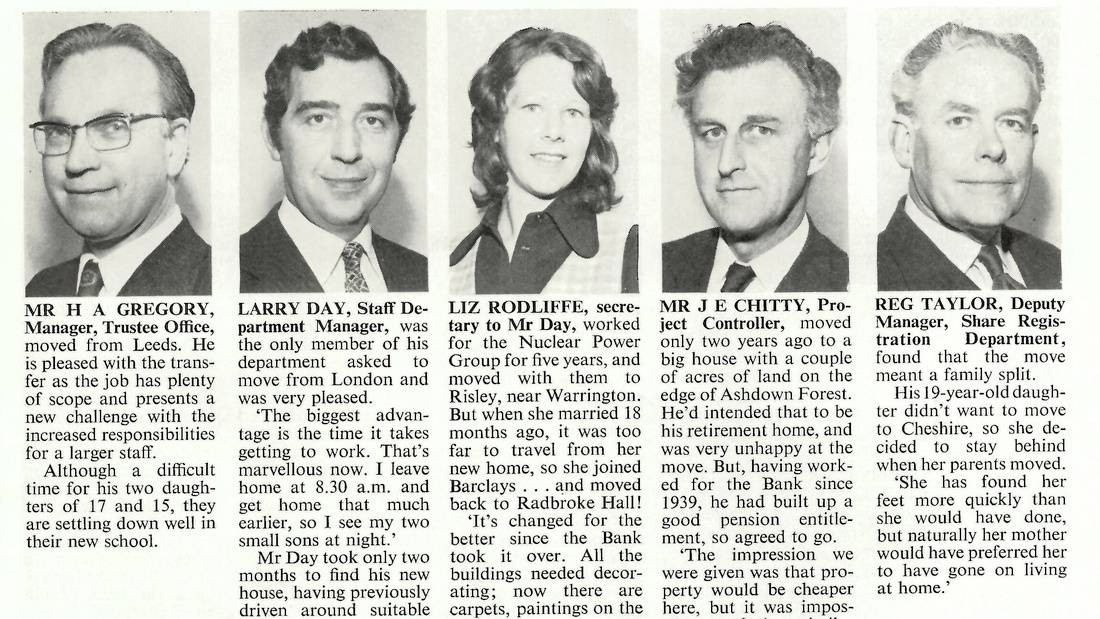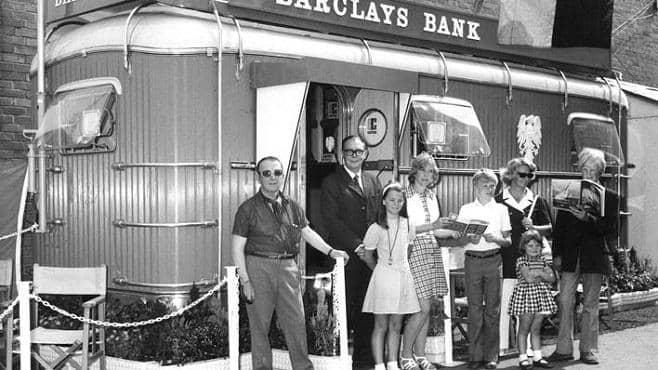
From the archives: Banks in unusual places
Barclays’ commitment to meeting customer needs has seen the bank conduct business in the unlikeliest of places
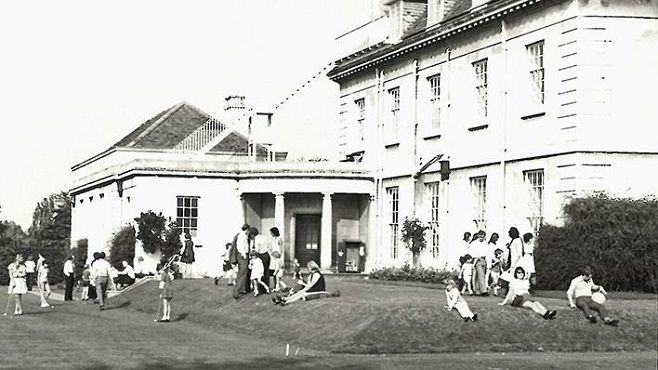
In 1972, Barclays relocated hundreds of staff to Radbroke Hall, creating an ‘innovation centre’ in the Cheshire countryside. As this historic building celebrates its 100th anniversary, we delve into the archives to find out how the bank oversaw a challenging – and pioneering – move north.
“There could be few people who would not prefer Radbroke Hall as a working environment to the dirt and noise of the City”, stated Barclays’ internal magazine, covering plans to post 1,400 staff to the Cheshire countryside. The announcement, in 1972, detailed the transfer of three Barclays departments from London, leading to the creation of the innovation centre that has been at the forefront of banking technology ever since.
Three miles outside Knutsford, Radbroke Hall was built in 1917 as a private residence for Manchester textile manufacturer Claude Hardy, who died two years into building work, leaving his wife Olga to oversee its completion. Refugees from Barclays’ Lombard Street headquarters would recognise the building’s Portland stone, although the main house – Grade II listed and in the French chateau style – was used only by senior executives, with the bulk of office space built post-war on the grounds. The 35-acre site was bought from the Nuclear Power Group, who had occupied Radbroke since 1956.
With around half of Radbroke’s staff transferred from other parts of the country – including 400 from London – the managers of the relocation seemed to appreciate that the move was a hard sell. “I realise this will be something of a shock to you, and more than likely unwelcome”, wrote John Quinton, the Regional General Manager in charge of the move, in a memo to staff. Pointing to “all that nowadays goes under the name of the ‘quality of life’,” Quinton states that “Manchester has much more to recommend it than the Londoner gives credit for”.
These prejudices were hard to break down. Barclays Spread Eagle magazine reported that trips were organised around the area “to try to show southerners that the north is not all smoky factory chimneys and people who speak a foreign language”.
Jeff Nash, billed as a Driver/Messenger, said: “We have done very well out of the move, but if I could have got the same advantages in London, I’d have stayed there.” Linda Clinton, Systems Analyst, missed “the variety and ease of shopping I had in Crawley”. Eric Nightingale, Controller of General Services, found that “the only advantage is that the roads are nearly empty and this saves on petrol”, while Olive Heywood, a Programmer, was enjoying the area but not Radbroke Hall itself: “I miss the air conditioning, and there’s a leak in the roof that’s been here for five years apparently and they can’t seem to put it right.”
A big draw for relocated staff, however, was affordable housing, quoted as “between £10,000 to £16,000 [£130,000 to £205,000 in 2017 prices] for a four-bedroomed detached house”.
The main clue to the move, however, came from the Deputy Chairman of Barclays, W.G. Bryan, who said “rentals in the City of London have now reached between £10 and £12 a square foot”. This cost – around twice as much as equivalent London prices today – would be reduced by over 80% by relocating to Cheshire. Barclays Bulletin also stated: “The shortage of junior clerical and secretarial staff that affects nearly every Head Office department doesn’t exist in this part of Cheshire.”
Three departments made the move: the bank’s Registration, Management Services, and Accounting and Statistics (Staff) Departments. Leslie Smith, the Manager of the Registration Department, saw the benefits of having “everything under one roof”, and all managers reported few problems in finding and integrating local staff. Anne Garner, described as being “responsible for finding the 300 or so women staff for the Hall over the past year” said that “the offer of positions for married women has been something of a novelty in the area. We had to persuade them to start with, but once the news got round we had no lack of enquiries”.
The culture clash between 1972 and 2017 is also evident when looking at those in relevant departments who were not invited to make the Radbroke move. Men under 18 and women under 25 were not required to go, while “women whose husbands work outside the bank” were found posts with Barclays “elsewhere in London”.
Once settled in Cheshire, staff could enjoy the Hall’s sports facilities and clubs, as well as a gala ‘Family Day’ that remains an annual Radbroke event. From its initial departments, Radbroke – its leaks fixed and surrounding facilities improved – has morphed into serving as the major centre of IT governance, administration and support for the Barclays Bank, and has been integral in developments from cash machines to digital banking.
“Life doesn’t seem so hectic at Radbroke Hall” concluded the Spread Eagle, in one of its cheerier articles, “people relax, tensions lift, somehow there seems to be more time. As one staff member said: ‘It’s going to cost the Bank more in the long run – it will have to pay out more in pensions, because we’ll all live longer than we would have done in London’. I had a feeling she was right.”

Barclays’ commitment to meeting customer needs has seen the bank conduct business in the unlikeliest of places
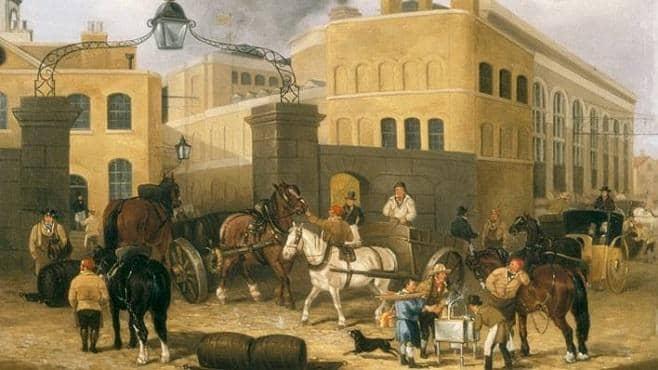
Only a small plaque now marks the place where the Barclay Perkins Brewery once stood in Southwark, south London – but 200 years ago it was the largest brewery in the world

It’s not every day you see someone strutting around in a three-stripe suit, decked out in the colours of a credit card

Barclays Group Archives are home to the records of Barclays PLC and its predecessors, dating from 1567 to the present day
